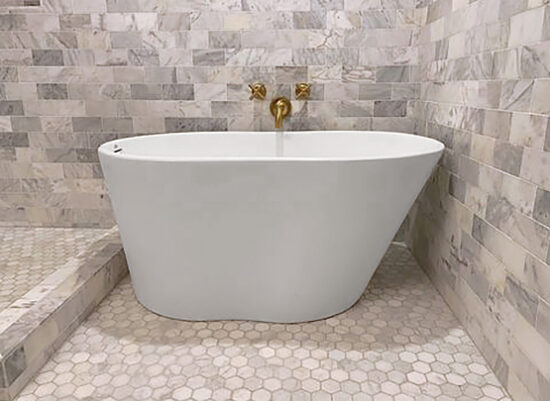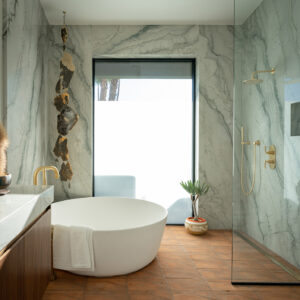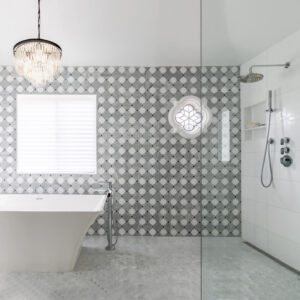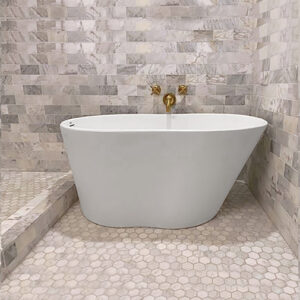The Wet Room Design Download
A quick guide to this emerging bathroom style trend
Today, we’re sharing some insights into the increasingly popular design trend of wet bathrooms. You may have noticed this new trend in magazines, kitchen & bath design message boards or you may have seen photos on social media.
We’ve compiled a quick guide on these unique spaces with insights from the award-winning Southern California architecture firm Lewis|Schoplein. We explore topics from what their purpose is to what bathtubs to consider suggesting to customers for these very specific projects. At Hydro Systems, we understand the importance of staying up to date with the latest design trends. We offer a wide range of bathtub styles, capabilities, and customizations that cater to the unique requirements of wet bathrooms, ensuring both style and functionality.
What is a Wet Room?
The wet bathroom design trend has gained traction over the past few years. It is an approach to bathroom layout that eliminates traditional shower enclosures and embraces an open, seamless space. In this design, the entire bathroom acts as a shower area – hence “wet” room, with the showerhead and drain integrated into the floor.
Why is it Trending?
The wet room has gained significant popularity for many reasons. Wet baths create spa-like atmospheres within the comfort of one’s home – this shift from looking at the bath space as a utilitarian space to a spa sanctuary has become an in-demand request by homeowners over the past decade.
Architect Toni Lewis of the architecture firm Lewis| Schoeplein believes we will see more of these kinds of spaces, especially as people adjust to thinking about the bath experience differently. “Wet baths (wet rooms) are really wonderful in creating a sense of ‘retreat,'” said Lewis. “They allow for a feeling of openness, in that shower and tub share floor area, and experientially they provide an opportunity to use the bath space in a new way.
Wet baths also maximize the available space, making smaller bathrooms appear more spacious and open, and can be accessible, making them excellent options for aging-in-place designs. They offer a luxurious and immersive bathing experience, allowing individuals to unwind and rejuvenate in a truly indulgent setting. “Considering the shower and tub as one idea makes sense, and many people use them together in a way that can feel much more naturalistic as a way to the bath,” Lewis says.

Bathtub Selection Considerations for Wet Rooms
After a layout has been decided, selecting the right bathtub is one of the most crucial design elements to consider as you plan the space. It enhances the overall aesthetic and functionality of the wet room.
Freestanding bathtubs work best in these spaces, but it’s crucial to pick a shape and size that works with the wet bath’s overall design concept and scale. Hydro Systems has a multitude of sizes that can work in both large and small configurations. For a smaller wet bath, the 48″ Soho freestanding bath or 58″ Alamo freestanding bath have small footprints and outstanding contemporary and transitional aesthetics, respectively, that would complement any wet bath scheme. If there is a luxury of space in a wet bath and a freestanding tub is able to be accommodated, there are several options to create a sanctuary space. The 70″ Denali freestanding bath or the 68″ Tribeca freestanding bath work in both contemporary and transitional designs.
For more information on Hydro Systems for your next project, please contact an authorized dealer near you
- Hydro Systems Pearl bathtub
- Hydro Systems Hyde bathtub
- Hydro Systems Tribeca bathtub
- Hydro Systems Soho bathtub







